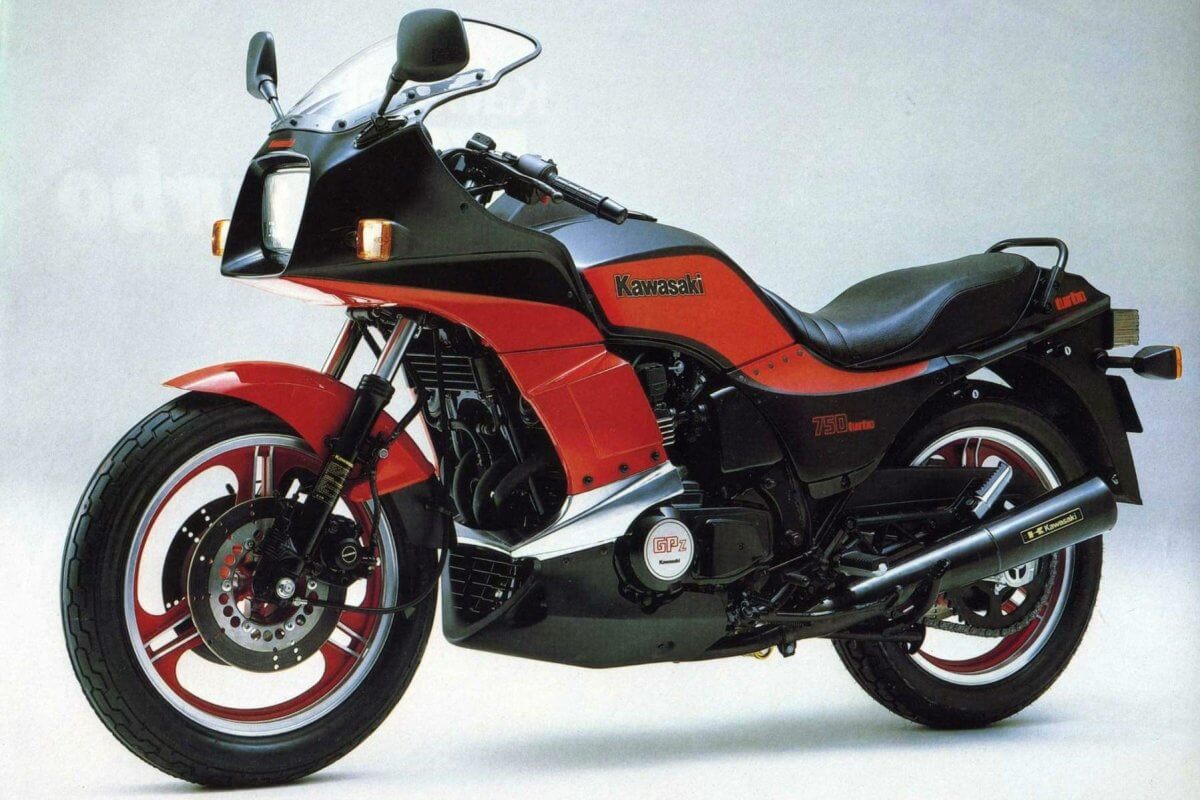Part 1: FORCED-INDUCTION PRODUCTION MOTORCYCLES

When Kawasaki launched the Ninja H2, virtually every motorcycle enthusiast gasped. That was because while the turbocharger and supercharger are commonly used in the automobiles, all current production motorcycle engines are naturally aspirated.

Ninja H2 supercharger - Courtesy of kawasaki.com
Naturally aspirated engines induct air for combustion depending solely on atmospheric pressure. On the other hand, forced induction, by way of a turbocharger or supercharger, forces in more air. With more air, more efficient combustion could be achieved, thus producing more power for a given engine capacity.

Turbo diagram - Courtesy of otofun.net
But the Ninja H2 and H2R were not the first forced induction production motorcycles in history. Here are their forebears, leading up to them and the new Kawasaki Ninja H2SX.

Kawasaki Ninja H2SX - Picture from kawasaki.com
Kawasaki Z1R-TC (1978)
This was the bike that started it all. It could be argued that the late-70’s to early-80’s was the turbo era, sparked by Porsche 911 Turbo in 1975 leading to more auto manufacturers adding a turbocharger to their cars. The Z1R-TC was not produced by the Kawasaki factory, as it was actually a Z1R with a turbo mounted to it, without further modifications to the chassis and brakes. However, the manufacturer approved it as a special model, sold only in the United States. The turbo punched the engine power to 130 bhp from 90 bhp. It was reported a handful to ride.

Kawasaki Z1R-TC - Courtesy of raresportbikesforsale.com
Honda CX500 Turbo (1982)
The Honda CX500 series had started production in 1978, then Honda decided to turbocharge it in 1982. But Honda being Honda, they did not just bolt a turbo to the standard bike, the CX500 Turbo featured many new technologies including programmed fuel injection. Unfortunately, the boost pressure was dialed up in order to produce a high-power output (85hp) which resulted in too much turbo lag, making the bike sluggish to ride at lower RPMs and suddenly taking off above that. The CX500 Turbo was axed at the end of 1982.

Honda CX500 Turbo - Courtesy of www.motomag.com
Yamaha XJ650 Seca Turbo (1982)
Yamaha jumped into the turbo fold too, with the XJ650 Seca Turbo. As opposed to Honda’s technology-laden solution, Yamaha took a simpler route. For example, the bike had four carburetors instead of fuel injection, and although it had two mufflers, the right muffler was routed to spin the turbo’s turbine. Yamaha’s engineers attempted to battle turbo lag by increasing the engine’s compression ratio. Sadly, they did not work on the bike’s handling resulting in a bike that did not handle like a sportbike despite the benefit of extra power.

Yamaha XJ650 Seca Turbo - Courtesy of nippon-classic.de
Honda CX650 Turbo (1983)
Honda knew of their mistakes with the CX500 Turbo and came up with a few revisions, culminating in the CX650 Turbo in the following year. To reduce turbo lag, turbocharger boost pressure was reduced, and engine compression ratio was upped. The changes brought out 100hp. But the bike had become expensive thus could not find many takers. Honda only made 1,777 CX650 Turbos.

Honda CX650 Turbo - Courtesy of www.classicsuperbikes.co.uk